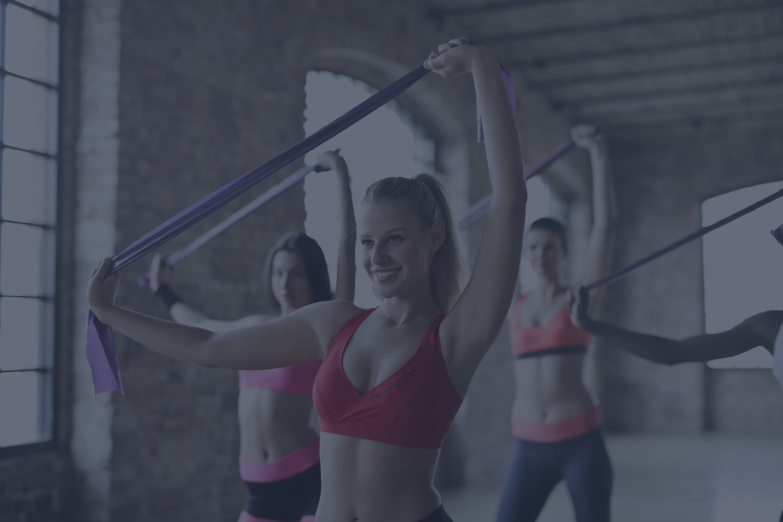
Hammer curls are a classic exercise that has seen many other workout trends come and go. Why are hammer curls still so popular in the lifting world? They work. And they work well. We're breaking down the many forms of this move, from alternating hammer curls to seated hammer curls so that you can build massive biceps and forearms.
The hammer curl is one of our favorite foundational moves to add to bicep workouts with resistance bands.
Why do I need to do another curl? I just finished three sets of biceps curls.
It may seem redundant to switch from one type of curl to another, but these two exercises aren't the same.
Although both curls work many complimentary but different muscles:
- Traditional bicep curls build the strength, size, and definition of the top of your bicep muscle.
- Hammer curls increase forearms strength and overall arm size and strength. Including both types of curls in your routine is the most well-rounded route to guarantee rippling arms.
We're uncovering and sharing everything you need to know about how to perfect hammer curls so you can incorporate these moves into your routine and yield significant gains.
What are hammer curls?
A hammer curl looks identical to a bicep curl, but with one crucial difference - the hands' starting position.
While the palms face forward in a regular bicep curl, you turn the palms inwards, toward each other, and complete the hammer curl in this position.
It's not just a clever name; the hammer curl closely resembles the way we move our arms when we're swinging a hammer to a nail.

made this with this new meme maker :)
Hammer curl muscles
The hammer curl works three specific arm muscles:
- Brachialis
- Biceps
- Brachioradialis
The biceps are the most obvious to spot, but the other two muscles are pretty important, running from the top of the arm and down into the forearm.
A hammer curl creates more muscle bulk because it builds these two muscles up as no other exercise can.
Types of banded hammer curls: Curl variations
We're showing you this move with a resistance band because it's the most effective way to perform hammer curls.
Resistance bands work the primary muscle group and the muscles that stabilize your arm during the move. Using a band will help you obtain bulk quicker than any free weight curls and build some serious resistance bands biceps.
Doing curls with a band should be tough - if it doesn't feel hard, you need to move on to a stronger, more resistant band.
You can use pull-up bands or handled resistance bands to perform banded hammer curls for forearms.
Classic standing hammer curls
- Grab a handled band or pull-up band in both hands. Step both feet onto the band to anchor it to the floor.
- Stand with feet shoulder-width apart and hands down as your sides, with palms facing in toward each other.
- Slowly bend your elbows and lift your hands up toward your shoulders. Keep elbows in at your sides and wrists stationary.
- Return both arms to the starting position, and repeat until your set is complete.
Banded curl variations
Once you learn how to do hammer curls, there are plenty of variations to make it more challenging to avoid strength plateaus.
Here are the most effective variations of hammer bicep exercises with bands so you can hit an even bigger range of arm muscles:
- Alternating hammer curls: Lifting one arm at a time helps you to concentrate on perfecting form.
- Seated hammer curls: By sitting while you lift, you can focus more energy on each arm.
- Incline hammer curls: Performing your hammer curls on an incline bench increases your stretch and range of motion and helps you target the brachialis.
Common curling mistakes
Using momentum to lift
One of the biggest mistakes we see weightlifters make is using too much momentum to lift instead of muscle strength. You're cutting your progress off at the knees by cheating the exercise this way.
Avoid swinging your arms or performing the move too quickly. If you can't complete the lift at a slow, controlled pace, downgrade to a lighter resistance or weight.
Shortening range of motion
We also see lifters not performing the hammer curl through its full range of motion, and stopping short of the bottom or top of the movement by even just a little cuts down your progress.
Moving the elbows
Your elbows have to move a bit in a hammer curl as they bend to perform the move. Some lifters unintentionally move their elbows to assist the lift and cheat.
Remember that this is a vertical lift, not horizontal. Don't let your elbows float around in space - glue them tightly into the sides of your rib cage and waist.
Tips for beginner lifters
If you're new to lifting and don't know where to start, use these tips while you try out hammer curls:
- Perform three sets of 8-12 reps of each resistance exercise you do. You want to max out, or work to failure, after 8, but before 12 reps are complete. If you're working outside of this range, switch to a lighter or heavier band.
- Don't train the same muscles two days in a row. They need 48 hours of recovery time between sessions.
- Above all else, learn and practice good form for every single move you do.
Final notes: How to do hammer curls
Hammer curls will help bulk your arms and improve overall strength even more than classic bicep curls.
Like any other lift, it should be your top priority to learn and perform them with good form to avoid injury and see better results.
Include at least one variation of hammer curls with a band in your arm routine once or twice a week, and you'll start to see bulged biceps in no time!









Leave a comment (all fields required)